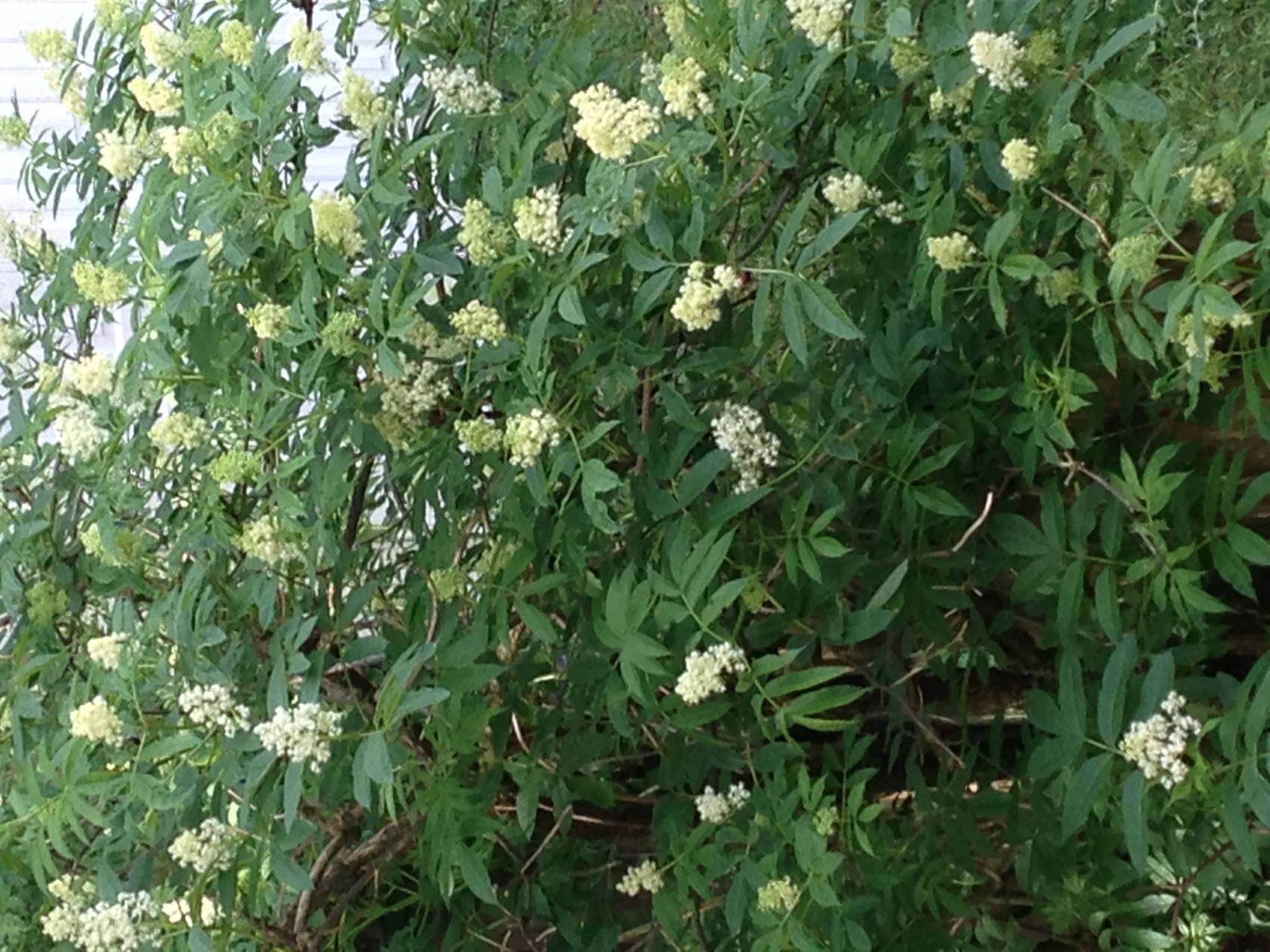A few years back, a high school friend had a fire that destroyed her house. Naturally, she mourned the loss of photos and assorted memories. In Facebook posts and discussions, she also revealed that she was devastated by the loss of the elderberry jelly and wine that she had recently put up.
Kim’s sadness over her loss caused me to reevaluate the elderberry. The drive out the road in Juneau is filled with elderberry. In spring, it paints a scenery of white flowers and as the season wanes, bright, red berries appear.
Normally, I get excited about the prospect of exploring new tastes, but sometimes I need an impetus to begin, especially when there are cautions about a plant. Elderberry roots, stems, and seeds are poisonous. Eating them builds up cyanide levels in our system. However, it is fairly easy to circumnavigate these dangers. When they are ripe, berries can be pulled off the stem with a fork. In the early stages, seeds haven’t developed on the flowers. As long as sprigs are used without the stems, all is well.
This is the time of the elderflower. The name itself evokes fairies and sprites living in an old growth forest. Like a snowbush, elderflowers emerge in a cream white-color with traces of green. Later, the flowers become tinged with brown and you can feel the hardness where the seed is forming.
As they emerge, the flowers have a surprising muscat grape flavor. Later, this appealing scent and flavor alters to become a less sought over odor. Cat pee comes to mind.
Ahhh, but for those few weeks, you can infuse the delicate flavor by placing it in water or by making a sugar syrup to add to sparkling water. Other people take the flower stalks and dip them in a batter and fry them up as fritters. Not that it isn’t good, but really, doesn’t everything fried taste good? I will say that the delicate flowers add a lightness to the otherwise heavy fritter.
Like many wild edibles, elderflowers are good to add as an accent. They go well with rhubarb, another spring treat. The flowers can be added to a sauce as it’s cooking, but I usually remove the flower sprig before eating as I would take out a bay leaf from a soup after it adds its essence.
If I leave in the flowers, I chop them up or separate them into individuals. I find they make a rhubarb cobbler even better. I didn’t grow up eating edible flowers. There was a marked distinction between the garden plants and the flower beds. Now, when I eat the flowers, it seems both magical and wrong.
In Ireland, elderflowers mark the beginning of the season while elderberries reveal the end. Unlike fireweed, which is a clear marker of fall, we don’t have a plant that represents the start. I would have said it begins when the wetlands transforms from a dull brown into bright green, but maybe we should look at the elderflowers emergence as the signal that it has truly begun.
Corinne Conlon writes “Gathering Alaska” for the Capital City Weekly.

